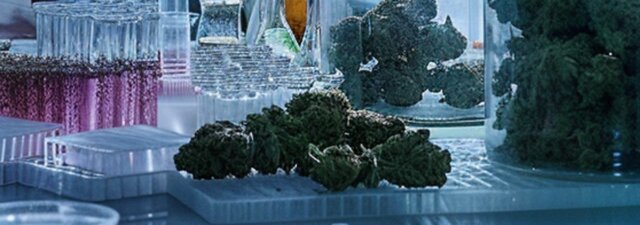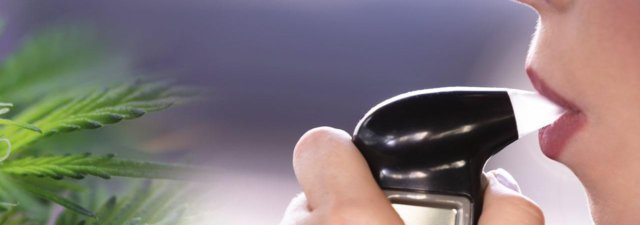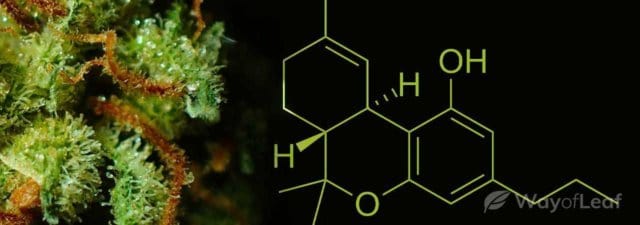In nearly every health-related article here on MarijuanaBreak, we usually end up discussing the endocannabinoid system, or ECS. After all, it is borderline impossible to explain how cannabis offers relief for specific conditions without mentioning the ECS to some extent.
Experts have described it as a “central component of the health and healing of every human, and almost every animal.” However, it is far from being fully understood or mapped within the human body.
In fact, having only been discovered in the 1990s, there is still much to learn about the ECS. Here’s what we have found to date.
Cannabinoids and the Endocannabinoid System
To understand the functions of the endocannabinoid system, we first have to understand what a cannabinoid is.
Cannabinoids are the active chemical compounds in all plants classified under the genus Cannabis. This includes indica, sativa, and ruderalis strains, as well as industrial hemp.
Scientists have identified over 80 distinct cannabinoids across all species of cannabis. However, it appears that the two most important ones in terms of the plant’s effects are THC (tetrahydrocannabinol) and CBD (cannabidiol).
A few of the numerous other natural cannabinoids found in marijuana include:
- CBN
- CBG
- CBC
- CBDA
- THCA
- THCV
It is these active cannabinoids that are responsible for the profound and far-reaching effects that cannabis has on the human endocannabinoid system.
They potentially provide a range of therapeutic effects, making cannabis an effective treatment for many ailments.
What Are Endocannabinoids?
Just like the marijuana plant, humans have naturally occurring cannabinoid compounds called endocannabinoids. Endocannabinoids are not identical to the cannabinoids that occur in cannabis (which are called phytocannabinoids). However, they do have similar chemical structures.
While there are likely many more that have yet to be discovered, it appears that the two primary endocannabinoids in humans are anandamide and 2-AG (2-arachidonoylglycerol).
These compounds are produced entirely naturally by the human body. Every one of us has them, regardless of whether we’ve used cannabis before or not.
In fact, experts believe that endocannabinoids exist in nearly every living organism on earth, from dogs and dolphins to sea squirts and nematodes.
How Endocannabinoids Influence Health
In terms of function, endocannabinoids work by interacting with their corresponding receptors, aptly named cannabinoid receptors. It appears that the most important of these internal receptors are called CB1 and CB2.
CB1 receptors primarily influence activity in the brain and nervous system. Meanwhile, CB2 receptors mainly influence immune system activity and interactions with body tissues and organ systems.
Endocannabinoids and their corresponding receptors exist across nearly every cell and tissue type in the human body. Therefore, they have a significant influence on many aspects of both the body and mind.
Endocannabinoids and their corresponding receptors exist across nearly every cell and tissue type in the human body.
The endocannabinoid system is so prevalent throughout human anatomy that it has been described as a “bridge between body and mind.” It has also been said that it is potentially “the most important physiologic system involved in establishing and maintaining human health.”
Among many other locations, endocannabinoids exist in abundance throughout the:
- Brain
- Nervous system
- Internal organs
- Connective tissues
- Glands
- Immune cells
These chemicals’ activity appears to regulate such things as cell-to-cell communication and neuroprotection. They even promote apoptosis, the death of malignant (cancer) cells and other non-productive cells through “programmed cellular suicide.”
This concept is truly amazing to consider in terms of the potential health benefits of cannabis.
How Does the Endocannabinoid System Work?
As we mentioned, the ECS functions through the interaction of naturally-occurring compounds (2-AG and anandamide) and their receptors.
However, this is an extremely basic description. The various cell-to-cell networks’ actual physiological pathways are highly complex. Therefore, much more research is needed even to bring us close to understanding this enigmatic system’s full capacity.

What’s intriguing about the ECS is that endocannabinoids can accomplish such a diverse range of bodily tasks. Meanwhile, they still manage to maintain the singular objective of homeostasis, thus keeping the body in a state of overall balance.
In other words, although the endocannabinoid system performs dozens and dozens of different tasks inside the body, it ultimately has one singular goal: ensuring that every physiological system is functioning healthily, efficiently, and in tune with one another.
Physical and Psychological Functions of the ECS
One of the best examples of the ECS in action is how it helps heal tissue after an injury. Here is how it works:
When a specific site becomes damaged, anandamide and 2-AG (the body’s main endocannabinoids) appear to decrease the release of sensitizers from the site of injury. This action prevents excessive nerve cell firing (i.e. minimizes pain) and also controls how immune cells release their inflammation-inducing substances.
In this particular example, one can see how the ECS influences separate pathways on different cell types to accomplish a single objective; minimizing pain and repairing damaged tissue.
The ECS has similarly profound impacts on the brain, nervous system, and our emotional wellbeing. For instance, endocannabinoid pathways can directly influence an individual’s response to external stimuli, which has potentially massive implications in altering human behavioral responses.
Therefore, the ECS and its network of chemical pathways may directly influence (or even reverse) the neurological actions that lead to certain mental health disorders. Anxiety, depression, and psychosis are just a few psychological conditions that appear to be associated with ECS dysfunction.
It indeed does seem that the endocannabinoid system is a veritable mind-to-body bridge with the potential to treat a range of diseases, whether they be mental or physical. So, how does cannabis fit into the picture?
How Does Cannabis Work with the Endocannabinoid System?
If every human being has an endocannabinoid system, then why do we even need cannabis?
Well, consider this: what happens when there’s an endocannabinoid deficiency or if the ECS is not functioning correctly in the body?
In fact, ECS dysfunction can cause any number of things to go wrong, either physically or psychologically. And this is why many people believe that cannabis can provide relief from a seemingly endless range of medical conditions.
Since cannabis contains chemicals with similar structures to our endocannabinoids, it makes sense that it would function comparably.
CBD can provide many of the therapeutic benefits of cannabis without the high.
For example, THC can bind with CB1 receptors in the brain to mimic anandamide’s activity. This is why high-THC cannabis strains have such a powerful influence on body and mind, including the quintessential marijuana ‘high.’
CBD, on the other hand, does not produce intoxicating effects. Scientists think that rather than binding with cannabinoid receptors directly, it indirectly increases our endocannabinoid levels.
Therefore, CBD can provide many of the therapeutic benefits of cannabis without the high. This explains why the compound has seen such a rapid rise in popularity over the past few years.
[To learn more about CBD and its therapeutic effects, check out this article].Final Thoughts on the Endocannabinoid System
To summarize, the ECS is essentially the body’s own “naturally-occurring cannabis system.” It can influence a range of mind/body functions to promote health and homeostasis on a complete, whole-organism level.
There is still much to learn about the ECS and its functions. However, early research suggests that it could play a crucial role in the treatment of many conditions. It has also been pivotal in increasing our understanding of how cannabis works and expedited the legalization of medical marijuana in many places.
*[Much of the information in this article was taken from Dr. Dustin Sulak’s article on the ECS for NORML, which is the National Organization for the Reform of Marijuana Laws].



![What Is Ocimene? [This Cannabis Terpene Explained]](https://marijuanabreak.com/wp-content/uploads/2020/10/wol_what-is-ocimene-640x225.jpg)
![What Is Terpinolene? [Cannabis Terpene Guide]](https://marijuanabreak.com/wp-content/uploads/2020/05/wol_what_is_terpinolene-640x225.jpg)







